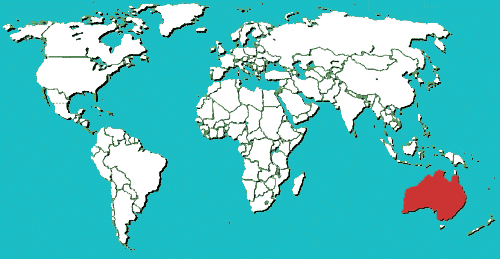
Circle the area on this map

C. The 24,096-square-mile island is about 150 miles south of the continent. It is believed the marsupials were named devils by early European colonists to Tasmania because of their loud screeches.
D. Europeans hunted the Tigers, dog-like marsupials, and the Emus, large flightless birds, to extinction. The Aborigines, who had lived on the island for 35,000 years, were wiped out by European diseases and colonists' guns. The last "full blooded " Tasmanian Aborigine died in exile in 1876.
B. The island's Central Plateau is one of the coldest places in Australia with average maximum temperatures in winter of 37 degrees. Tasmania lies in Australia's southern temperate region. The country's tropical and equatorial regions are on the northern coast.
C. Like the Australian continent, Tasmania lies between the Indian Ocean and the Pacific Ocean. It is separated from the continent by the Bass Strait. The Coral Sea lies off the continent's northeast coast and is home to the Great Barrier Reef, the world's largest coral reef system.